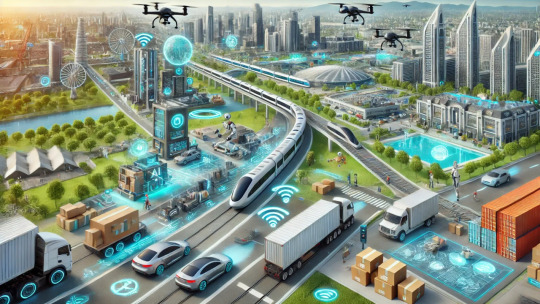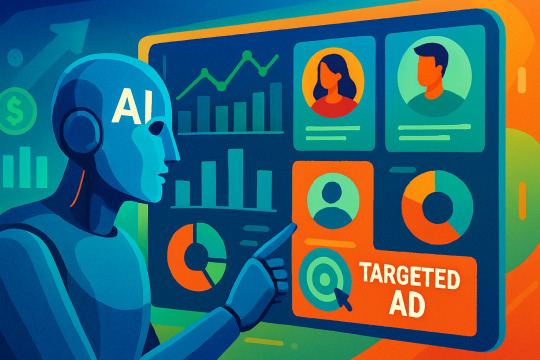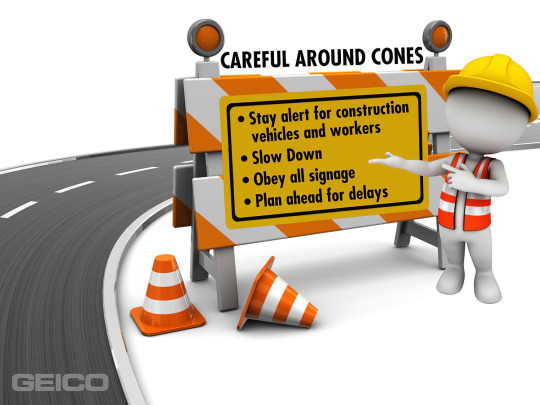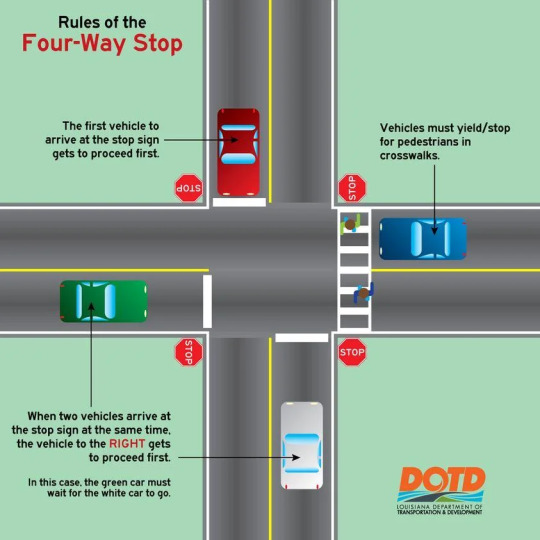Don't wanna be here? Send us removal request.
Text
AI in Finance: Enhancing Decision-Making, Security, and Customer Experience

The financial sector is experiencing a technological renaissance, powered by artificial intelligence (AI). From fraud detection to investment strategies, AI is revolutionizing how financial institutions operate, assess risk, and engage with customers. In an industry driven by data, speed, and precision, AI offers unparalleled advantages in efficiency and insight.
One of the most critical roles of AI in finance is fraud detection and prevention .
Credit scoring and risk assessmentare also being transformed by AI. Instead of relying
AI is widely used in algorithmic trading, where high-speed data analysis and predictive modeling
Chatbots and virtual assistantspowered by AI are enhancing customer service in banking
AI supports financial planning and wealth management through robo
In regulatory compliance , AI streamlines the monitoring of complex rules and reporting requirements. Natural language processing can review contracts, flag compliance issues, and aid institutions
Financial organizations often partner with AIspecialists to create custom AI solutions tailored to their security protocols, customer demographics, and business models. These bespoke systems provide flexibility, scalability, and competitive advantage.
0 notes
Text
Understanding Road Signs: A Key to Safer

Knowing how to read and react to road signs is one of the most fundamental skills for any driver. In Canada, road signs come in various shapes, colors, and categories—each designed to guide, regulate, or warn. For new drivers, learning to recognize these signs quickly is critical for both passing
1. Regulatory Signs: The Rules of the Road Regulatory signs are usually white with black or red
2. Warning Signs: Caution Ahead Usually yellow and diamond-shaped
3. Guide Signs: Directions and Distances Green or blue guide signs help you navigate highways,
4. Construction Signs: Proceed with Orange signs signal construction or maintenance zones
5. School and Playground Zones These signs, often with fluorescent yellow-green coloring, indicate areas with children present. Slow down and stay alert during posted hours, which vary by province. Watch for crossing guards
6. Temporary Signs and Detours Event-related or emergency detours may introduce unfamiliar signage. Stay alert for barricades, arrow boards, or portable signs that temporarily override
7. Bilingual and Symbolic Signs In many parts of Canada, especially in Quebec, signs
8. Test Your Knowledge Regularly Even experienced drivers benefit from reviewing road sign meanings. If you're preparing for your G1, Class 7,
Strengthen your road sign knowledge and ace your driving exam with practice tools and study guides from licenseprep.ca . Learning the signs
#RoadSigns
0 notes
Text
AI in Human Resources: Revolutionizing Talent Acquisition and Workforce Management

Human Resources (HR) is undergoing a digital transformation, and artificial intelligence (AI) is playing a leading role. From sourcing candidates to predicting employee turnover, AI is helping HR teams streamline operations, make data-driven decisions, and enhance the employee experience. As competition for talent intensifies, AI offers a strategic edge in managing and developing human capital
One of the most impactful applications of AI in HR is tal. AI-powered platforms can scan thousands of resumes
AI enhances candidatethrough chatbots and automated communication tools
In employee management, AI supports performance monitoring and evaluation. By analyzing metrics like productivity, collaboration, and
AI also contributes to predictive workforce analytics. Companies can use machine learning models to forecast attrition
Learning and development (Lprograms
AI is also used for diversity and inclusion initiatives . By monitoring hiring practices, promotion trends
To successfully integrate these tools, companies often collaborate with AI/ML development experts to build custom HR solutions that align with their culture, goals, and compliance needs. These partnerships ensure that AI systems are ethical, secure, and tailored to the organization's unique environment.
0 notes
Text
How Weather Affects Stopping Distance: What Every Driver Should Know

Stopping distance isn't just about how quickly you hit the brakes—it's a combination of reaction time and braking ability, both of which are heavily influenced by road conditions. For Canadian drivers, changing weather plays a major role in how much space you need to stop safely.
1. Understanding Total Stopping Distance StoppingPerception distance + Reaction distance + Br. In good conditions, this might seem manageable,
2. Wet Roads Double the Distance When it rainstwice as long to stop
3. Snow and Ice Multiply the Risk Snow can tripleyour stopping distance, and icy roads can multiply it. Driving too close or braking
4. Tires and Tread Good tires with
5. Use Brakes Smoothly in Poor Conditions Slamming
6. Adjust for Visibility Bad weather often comes with
7. Speed and The faster you drive, the longer it takes to stop—
8. Learn and Practice Defensive Techniques Understanding the physics behind stopping distance is key, but real skill comes from practice. Defensive driving courses and online tools can help reinforce these principles.
Want to be fully prepared for Canadian weather conditions on the road? Visit licenseprep.ca for free study tools, driving tips, and test-ready guidance for learner drivers.
#StoppingDistance
0 notes
Text
AI in Transportation: Smarter Mobility for a Connected World

Artificial intelligence (AI) is transforming transportation into a more efficient, safer, and sustainable system. From self-driving cars and smart traffic control to predictive maintenance and personalized mobility services, AI is at the heart of modern transportation innovation. These advancements are helping cities, companies, and commuters navigate a rapidly changing world.
One of the most well-known applications of AI in transportation is the autonomous vehicle . Using computer vision,
Traffic managementare also being enhanced through AI. Smart algorithms analyze real-time
AI powers rideplatforms by matching riders with drivers
In logistics, AI is used for route optimization. Delivery companies use AI to
AI also plays a crucial role in predictive maintenance
Public transportation networks are
To implement these cutting-edge solutions, organizations often turn to specialized AI/ML development teams. These experts build custom models and systems that are tailored to unique transportation challenges, ensuring smooth integration and high-performance outcomes.
As cities grow and mobility demands evolve, AI will continue to drive progress in transportation. With the
0 notes
Text
Driving Near Emergency Scenes: What You Need to Know

When approaching emergency scenes—whether it's a crash, roadside assistance, or first responders on duty—drivers must act with caution and responsibility. Failing to slow down or move over not only endangers lives but can also result in serious fines. New Canadian drivers must understand how to handle these situations safely and
1. The “Move Over” Law Across Canada, "Move Over" laws require drivers to slow down and, if safe, change lanes when
2. Slow Down Significantly Even if changing lanes isn't possible, you must reduce your speed well below the
3. Give Space, Stay Alert Keep a wide berth between your vehicle and
4. Don't Resist the urge to slow down excessively or stare at the incident. “Rubbernecking” causes traffic delays and accidents. Stay focused on the road ahead and keep moving smoothly once you pass.
5. Follow Officer If police
6. Avoid Distractions Silence your phone
7. Never Block Emergency Access Don
8. Prepare Through Education Emergency scenarios are unpredictable. Prepare yourself with the knowledge and confidence needed to act safely under pressure. Understanding legal obligations is just the beginning.
To build safe habits and pass your driving exam with confidence, visit licenseprep.ca for expert guidance and practice resources tailored to new
#MoveOverLaw #EmergencySceneSafety #NewDriverTips #SafeDrivingCanada #LicensePrep #FirstResponderSafety #RoadsideAwareness #Driving
0 notes
Text
AI in Real Estate: Transforming Property Search, Management, and Investment

Artificial intelligence (AI) is revolutionizing the real estate sector by improving how properties are bought, sold, managed, and valued. With data-driven decision-making and intelligent automation, AI is reshaping everything from tenant experiences to investment strategies. For a traditionally manual and location-dependent industry, this digital transformation is both timely
One of the most visible applications of AI in real estate is in property search and. AI algorithms analyze a user's preferences
Virtual assistants and chatbotsare enhancing customer service across real estate platforms
In property management, AI simplifies day-to-day operations such
AI is also revolutionizing property valuation and market analysis. By processing data from
Real estate investors use AI for portfolio optimization and risk assessment. AI-driven analytics tools
The rise of computer visionallows for
To develop scalable, tailored solutions for the real estate industry, many firms are partnering with AIspecialists. These collaborations result
As AI continues to integrate into the real estate ecosystem,
0 notes
Text
Understanding Right-of-Way: Who Goes First?

Right-of-way rules help prevent confusion and collisions at intersections, crosswalks, and other shared road spaces. For new drivers in Canada, understanding who has the right-of-way—and when to yield—is fundamental to driving safely and legally.
1. What Is Right-of-Way? Right-of-way refers to the legal right of a driver,
2. Whenright has the right-of
3. Yielding at Uncontrolled Intersections In residential areas
4. Turning Left at Intersections When turning left, you must yield to oncoming traffic going straight or turning right. Wait for a safe gap in traffic before proceeding. Even if you
5. Pedestrians Always Come First Pedestrians in marked or unmarked crosswalks always have the right-of-way. Be especially careful at school zones, residential neighborhoods, and intersections where visibility is
6. Merging and Lane Changes When merging onto a road or changing lanes, the vehicles already in the lane have the right-of-way.
7. Emergency Vehicles Emergency vehicles with flashing lights and sirens always have the right
8. Practice Defensive Even if you have the legal right-of-way, yield
Get a strong grasp on road rules and right-of-way scenarios with practice quizzes and driver prep resources at licenseprep.ca —Canada's trusted platform for learner drivers.
#RightOfWay #SafeDrivingCanada #New
0 notes
Text
AI in Transportation: Driving Safer, Smarter, and Greener Mobility

The transportation industry is undergoing a dramatic transformation, with artificial intelligence (AI) at the wheel. From autonomous vehicles to intelligent traffic systems, AI is helping to enhance safety, reduce congestion, and make mobility more efficient and environmentally friendly. As cities grow and demand for transportation increases, AI technologies are becoming essential to keep people and goods moving smoothly.
One of the most revolutionary developments in this space is autonomous driving . AI systems process
Traffic management systems powered by
Public transportation is also being enhanced through AI. Predictive maintenance of buses and trains ensures smoother operations and fewer service interruptions
Logistics and supply chain management have seen major improvements thanks to AI. Route optimization algorithms help logistics companies reduce delivery times
AI contributes significantly to passenger safety and experience . From facial recognition for secure
In the push towards sustainability, AI enables green mobility solutions . Electric vehicle (EV) fleet management systems use AI to
To implement effective and secure mobility solutions, transportation agencies and tech companies are increasingly collaborating with AI/ML development partners. These collaborations result in robust platforms that are customized to meet regulatory requirements
AI is reshaping transportation in ways once considered science fiction. As adoption grows,
0 notes
Text
Roundabouts in Canada: How to Navigate Them Safely

Roundabouts are becoming increasingly common on Canadian roads, designed to improve traffic flow and reduce collisions. While they may seem confusing at first, roundabouts are straightforward once you understand the rules. New drivers must learn how to use them confidently and safely.
1. Know What a Roundabout Is A roundabout is a circular
2. Slow Down and Prepare to Yield As you approach a round
3. Choose the Right Lane In multi
4. Signal Your Use your right.
5. Enter Only When It's Safe Wait
6. Don't Change L Stay in your
7. Watch for Ped Pedestrians
8. Practice Makes Perfect If roundabouts are new to you, practice in
To master intersections, rules of the road, and more, visit licenseprep.cafor helpful study tools and expert guidance built for Canadian learners
#RoundaboutRules
0 notes
Text
AI in Marketing: Revolutionizing Customer Targeting and Campaign Performance

In today's digital-first landscape, artificial intelligence (AI) is rapidly transforming the marketing industry. With massive amounts of data at their fingertips, marketers are turning to AI to better understand customer behavior, personalize messaging, and optimize campaign outcomes. By leveraging intelligent systems, brands can deliver more relevant experiences while achieving higher efficiency and ROI.
One of the most impactful uses of AI in marketing is audience segmentation. Machine learning algorithms analyze customer demographics
Predictive analytics powered by AI helps forecast customer behavior, such as likelihood to convert or churn
Personalization has become a marketing necessity, and AI makes it scalable. From dynamic email content to individualized website experiences, AI-driven personalization boosts relevance and drives conversion. Recommender systems—like those used by streaming platforms and online retailers—suggest products or content that align with
AI is also transforming advertising through programmatic buying . These systems automatically bid on ads
In content creation , AI tools assist with writing ad copy, generating headlines, and even producing video scripts. Natural language processing
Chatbots and virtual agents , powered by AI, engage customers instantly on websites
Marketers who want to harness the full power of AI need tailored solutions that align with their goals. Collaborating with an AI/ML development partner provides access to custom models, automation tools
As competition increases and attention spans shrink,
0 notes
Text
Driving in Construction Zones: Stay Alert and Stay Safe

Construction zones are a common sight on Canadian roads, especially during warmer months. These areas often feature narrowed lanes, abrupt stops, and workers in close proximity to traffic. For new drivers, learning how to navigate these zones safely is crucial—not just to avoid fines, but to protect lives.
1. Recognize the signs Early construction zones are clearly marked
2. Slow Down and Follow Posted Limits Speed limits are usually reduced
3. Obey Flaggers and Temporary Flaggers have the same authority as regular traffic signals in construction zones. Always follow their directions. Temporary stop signs, yield signs, or lane signals must be obeyed just like you
4. Eliminate Distractions Avoid using your phone, adjusting your GPS, or other distractions while driving through a work zone.
5. Watch for Sudden Stops and Lane Changes Traffic can slow or stop abruptly in construction areas. Be prepared for shifting lanes, uneven pavement, or narrowed shoulders. Increase your following distance and be ready to brake gradually to avoid rear
6. Respect the Workers and Their Space Road workers often perform their duties just feet from active lanes. Respect their space by slowing down, not hon
7. Plan Ahead Before heading out, check for construction updates or detours in your area.
8. Safe Driving Is the Law Beyond the rules and fines, driving safely in construction zones is a matter of responsibility and
For more essential driving tips and exam prep resources, visit licenseprep.cato help you stay safe and confident on Canadian roads.
#ConstructionZoneSafety #SafeDrivingCanada #LicensePrep #Road
0 notes
Text
AI in Real Estate

The real estate industry is rapidly embracing artificial intelligence (AI) to redefine how properties are bought, sold, and managed. From streamlining property searches to automating valuations and personalizing client interactions, AI is delivering data-driven intelligence that transforms the traditional real estate experience. As competition intensifies and client expectations evolve, AI is emerging as a critical asset for real estate professionals.
One of the most powerful applications of AI in real estate is property valuation . Machine learning
AI also powers predictivethat help investors and agents identify emerging
Personalized propertyare becoming more refined through AI. By tracking user preferences, behaviors,
AI-driven chatbots and virtual assistants are revolutionizing client engagement by providing instant responses
In property management , AI helps
Document processing and contract management are also being automated
Real estate companies aiming to stay ahead of the curve are turning to AI/ML developmentpartners to
As AI continues to integrate into every facet of real estate,
0 notes
Text
Understanding Four-Way Stops: Right-of-Way and Courtesy

Four-way stop intersections can be confusing for new drivers, especially when multiple vehicles arrive at the same time. Knowing who has the right-of-way and how to navigate these stops correctly is critical for preventing accidents and ensuring smooth traffic flow. Mastering this skill is also a key component of your Canadian driving test.
1. What Is A four-way stop is
2. First Come, First Go The general rule is simple: the
3. Arriving at the Same Time When two vehicles arrive at the intersection simultaneously, the driver on the
4 Always use your turn signals to indicate your intentions. This helps other drivers understand what you're doing and avoids hesitation or miscommunication. A friendly wave can
5. Make Full Stops Every Time Rolling stops are
6. Watch for Pedestrians and Cyclists Pedestrians have the right-of
7. Be Fog
8. Practice Builds Confidence Four-way stops are common in residential areas and rural intersections. The more you practice, the more second-nature these rules will become. Being courteous and predictable
Ready to sharpen your skills and ace your driving knowledge test? Visit licenseprep.ca for trusted prep tools, guides, and practice exams.
#FourWayStop #RightOfWay #NewDriverTips #SafeDrivingCanada #LicensePrep
0 notes
Text
AI in Manufacturing: Driving Smart Factories and Predictive Maintenance

The manufacturing industry is undergoing a transformative shift towards greater efficiency and intelligence, thanks to artificial intelligence (AI). Known as the backbone of the Fourth Industrial Revolution, AI is empowering manufacturers to create “smart factories” where machines, systems, and data are interconnected to optimize production, reduce downtime, and enhance quality. With AI at the helm, manufacturing is becoming more agile, sustainable, and competitive.
One of the most significant applications of AI in manufacturing is predictive maintenance. By using machine learning algorithms to analyze sensor data
AI also plays a central role in quality control and defects. Computer vision systems powered by
In production optimization , AI helps balance
Supply chain management is another area transformed by AI. By analyzing data from suppliers, logistics, and market conditions, AI provides accurate forecasts
AI also facilitates the rise of collaborative robots (cobots) . These robots work safely alongside human workers, performing repetitive or dangerous tasks
Workplace safety is being enhanced through AI-powered monitoring systems that detect
To fully leverage these capabilities, manufacturers are turning to AI/ML development experts to build customized solutions tailored to their operations. Whether implementing predictive maintenance,
As AI continues to evolve, the smart factory will become the new standard
0 notes
Text
AI in Logistics: Streamlining Supply Chains and Deliveries

The logistics industry is embracing artificial intelligence (AI) to meet the growing demands of global commerce. From route optimization to real-time tracking, AI is revolutionizing how goods are stored, moved, and delivered. As consumer expectations for speed and reliability continue to rise, logistics companies are turning to intelligent systems to enhance efficiency, reduce costs, and stay ahead in an increasingly competitive market.
A core benefit of AI in logistics is route optimization. Using real-time traffic data, weather patterns
AI also plays a vital role in warehouse management . Through the
Demandis another area where AI
Real-time shipment tracking and predictive analytics are enhancing transparency
In last-mile delivery, which is often the most expensive and complex part of logistics, AI
AI supports risk management and supply chain resilience . Machine learning models can identify potential disruptions, such as supplier delays or geopolitical issues, and
The integration of AI also promotes sustainability in logistics. By optimizing transportation and warehouse energy
Partnering with a specialized AI/ML development provider allows logistics companies to deploy custom AI solutions that address their specific challenges and goals. From automation to analytics, tailored AI tools deliver measurable improvements across the entire supply chain.
0 notes
Text
Driving in Rain and Wet Conditions: Stay Safe When Roads

Rainy weather can transform even familiar roads into unpredictable environments. Wet pavement reduces tire traction, increases stopping distances, and can obscure your visibility. For new drivers in Canada, understanding how to adapt to rainy conditions is key to staying safe behind the wheel. Here's how to handle the challenges of driving in the rain with confidence and caution.
1. Slow Down and Increase One of the
2. Use Your Headlights, Not Your High Beams When visibility
3 Hydroplaning happens when your tires lose contact with the road surface
4. Check Your Wipers and Before heading out in wet weather, ensure your windshield wipers are in good condition. Streaky or noisy wipers should be replaced immediately. Also, use your defogger or air conditioning to keep your windows
5. Avoid Sudden Movements Quick braking, sharp turns, or rapid acceleration can all lead to skidding on wet pavement. Drive smoothly and anticipate your
6. Be Extra Cautious at Intersections and Curves Painted road markings, metal
7. Don't Use Cruise Control Cruise control can be risky in rainy conditions because it may delay your ability to react quickly. If you start to hydroplane while cruise control is engaged, your vehicle might accelerate or maintain
8. Stay Home if Conditions Are Sometimes the safest decision
Mastering rainy-day driving takes practice, but staying calm and cautious will always serve you well. To learn more about safe driving techniques and prepare for real-life weather scenarios, visit licenseprep.ca.
#RainyDriving #WetRoadsSafety #DrivingTipsCanada #NewDriverAdvice #HydroplaningPrevention #LicensePrep #SafeDrivingInRain #CanadianRoadSafety #DrivingInBadWeather
0 notes